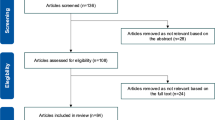Abstract
This article is about three widespread and far-reaching mistakes in financial markets, namely, the Equity Home Bias, Anchoring and Herding. We use a combination of two different sources, survey answers and actual trading patterns, in order to analyze those mistakes empirically. This two-pronged approach allows us to discover interrelations between talk and action and provides a robustness check for our findings. Equity Home Bias is more predominant in real trading than investors admit in the questionnaire. In addition to domestic stocks, German investors also overweight Non-German Eurozone stocks. Consequently, investors hold an astonishing 82.13 per cent of their portfolio in stocks denominated in Euro. Anchoring in the survey is positively correlated with the Disposition Effect in actual trading. We ask investors if they allow themselves to be influenced by others, and we demonstrate that there is a positive link between affirmative answers and Herding in real action. In addition, we study whether behavioral differences exist between various socio-demographic groups. Higher educated investors are less inclined to exhibit the Equity Home Bias, Anchoring and Herding. Whereas gender hardly influences biases, interestingly, age is positively related to Equity Home Bias but negatively related to the other two biases.
Similar content being viewed by others
References
Anderson, J.V. (2010) Detecting anchoring in financial markets. The Journal of Behavioral Finance 11 (2): 129–133.
Barber, B., Lee, Y., Liu, Y. and Odean, T. (2007) Is the aggregate investor reluctant to realize losses? Evidence from Taiwan. European Financial Management 13 (3): 423–447.
Boyer, B., Kumagai, T. and Yuan, K. (2006) How do crises spread? Evidence from accessible and inaccessible stock indices. Journal of Finance 61 (2): 957–1003.
Chiang, T.C. and Zheng, D. (2010) An empirical analysis of herding behavior in global stock markets. Journal of Banking and Finance 34 (8): 1911–1921.
Deutsches Aktieninstitut. (2011) Zahl der Aktionäre in Deutschland. http://www.dai.de/internet/dai/dai-2-0.nsf/dai_publikationen.htm, accessed 20 September 2011.
Dodonova, A. and Khoroshilov, Y. (2004) Anchoring and transaction utility: Evidence from on-line auctions. Applied Economic Letters 11 (5): 307–310.
Dorn, D. and Huberman, G. (2005) Talk and action: What individual investors say and what they do. Review of Finance 9 (4): 437–481.
French, K. and Poterba, J. (1991) International diversification and international equity markets. American Economic Review 81 (2): 222–226.
Goo, Y.-J., Chen, D.-H., Sylcien Chang, S.-H. and Yeh, C.-F. (2010) A study of the disposition effect for individual investors in the Taiwan stock market. Emerging Markets Finance & Trade 46 (1): 108.
Grinblatt, M. and Keloharju, M. (2001) What makes investors trade? Journal of Finance 56 (2): 589–616.
Handelsblatt. (2011) Emerging markets schlagen den Rest der Welt, http://www.handelsblatt.com/finanzen/zertifikate/nachrichten/anlagestrategie-emerging-markets-schlagen-den-rest-der-welt-/4346232.html, accessed 21 September 2012.
Kaustia, M., Alho, E. and Puttonen, V. (2008) How much does expertise reduce behavioral biases? The case of anchoring effects in stock return estimates. Financial Management 37 (3): 391–412.
Kilka, M. and Weber, M. (2000) Home bias in international stock return expectations. Journal of Psychology and Financial Markets 1 (3–4): 176–192.
Lakonishok, J., Shleifer, A. and Vishny, R. (1994) Contrarian investment, extrapolation, and risk. Journal of Finance 49 (5): 1541–1578.
Nofsinger, J. (2011) The Psychology of Investing. New York: Prentice Hall.
Nordén, L. (2010) Individual home bias, portfolio churning and performance. European Journal of Finance 16 (4): 329–351.
Northcraft, G.B. and Neale, M.A. (1987) Experts, amateurs, and real estate: An anchoring-and- adjustment perspective on property pricing decisions. Organizational Behavior and Human Decision Processes 39 (1): 84–97.
Odean, T. (1998) Are Investors reluctant to realize their losses? Journal of Finance 53 (5): 1775–1798.
Oehler, A., Rummer, M. and Wendt, S. (2008) On the causes of home-biased investment decisions. Journal of Behavioral Finance 9 (3): 149–162.
Oehler, A. and Wendt, S. (2008) Herdenverhalten in der Fonds-Industrie? In: A. Oehler and U. Terstege (eds.) Finanzierung, Investition und Entscheidung. Einzelwirtschaftliche Analysen zur Bank- und Finanzwirtschaft. New York: Wien, pp. 64–83.
Shefrin, H. and Statman, M. (1985) The disposition to sell winners too early and ride losers too long: theory and evidence. Journal of Finance 40 (3): 777–790.
Shiller, R. (2005) Irrational Exuberance. Princeton: Princeton University Press.
Tversky, A. and Kahneman, D. (1974) Judgment under uncertainty: Heuristics and biases. Science 185 (4157): 1124–1130.
Weber, M. and Welfens, F. (2007) An Individual Level Analysis of the Disposition Effect: Empirical and Experimental Evidence. Sonderforschungsbereich 504, Publications 07–45, University of Mannheim.
Zhou, R.T. and Lai, R.N. (2009) Herding and information based trading. Journal of Empirical Finance 16 (3): 388–393.
Author information
Authors and Affiliations
Corresponding author
Appendix
Appendix
Survey (translated from German)
(1) Are you?
□ female □ male
(2) How old are you?
_________________ years old
(3) What is your level of education?
□ no college degree
□ college degree or higher
(4) Imagine you could choose between German stocks and foreign stocks. What would be the fraction of German stocks in your portfolio?
____________________ per cent
(5) Please estimate the distance from Boston (United States) over New York City (United States) to Munich (Germany)?
□ more than 10 000 km
□ less than 10 000 km?
Please tell us your best estimate for the distance __________________ km.
(6) Please estimate the distance from Sydney (Australia) over Tokyo (Japan) to Shanghai (China)?
□ more than 5000 km
□ less than 5000 km?
Please tell us your best estimate for the distance __________________ km.
(7) Please imagine the following: You are interested in a firm's stocks and consider buying stocks from that firm. However, you hear that one of your friends sells stocks of that firm after having owned them for four years. How would the behavior of your friend influence your own behavior?
□ Positive, I would now prefer to buy those stocks more than before.
□ Neutral, my friend's behavior wouldn’t influence my decision.
□ Negative, I would now rather stay away from buying those stocks.
Rights and permissions
About this article
Cite this article
Nguyen, T., Schuessler, A. Do they trade as they say? Comparing survey data and trading records. J Asset Manag 14, 37–51 (2013). https://doi.org/10.1057/jam.2012.24
Received:
Revised:
Published:
Issue Date:
DOI: https://doi.org/10.1057/jam.2012.24




